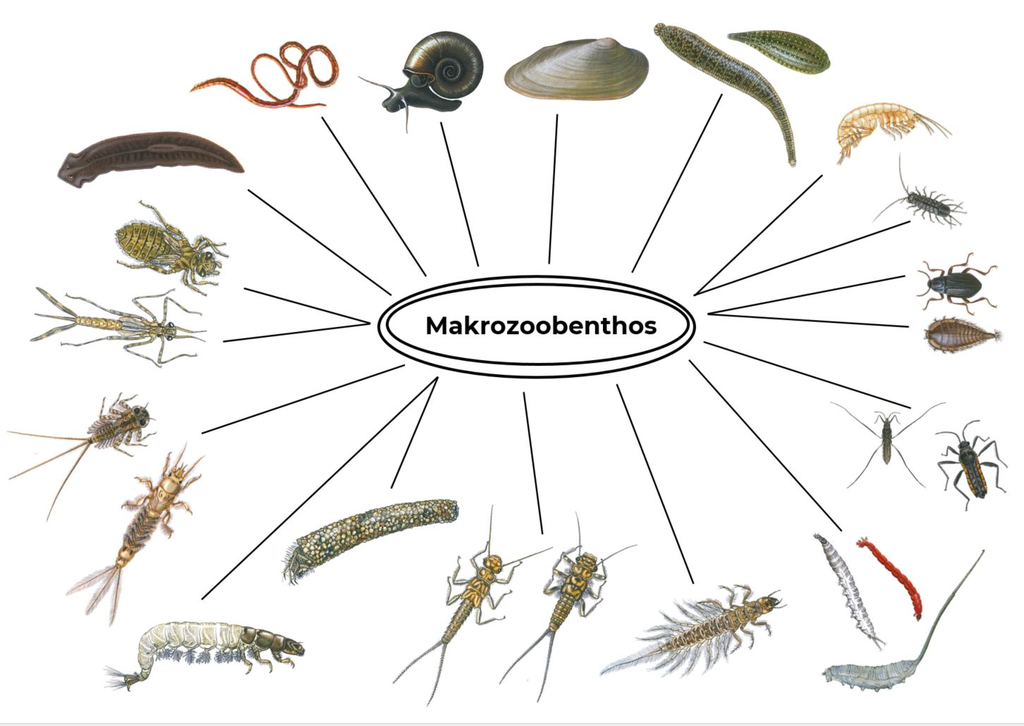
Macrozoobenthos
The macrozoobenthos is a good indicator of the biological quality of the water, i.e. of the extent of organic pollution. These are small invertebrates (“zoo”) that can be seen with the naked eye (“macro”), such as insect larvae, worms, snails, mussels, and crabs that live on the bottom of the water (“benthos”). In addition, this group is an indicator of “general degradation”, i.e. of the structural changes and the intensity of land use in the catchment area of the rivers.

The Gammarus
The Gammarus, also known as Gammarus pulex, is a species of freshwater crustacean found in flowing waters such as streams, rivers and small lakes. It belongs to the order Amphipoda and is widespread in Europe and North America.
The Gammarus is an important component of the macrozoobenthos in these habitats. It feeds on dead plants and animals as well as algae and other organic materials. At the same time, it serves as a food source for many fish and other aquatic creatures.
Due to its importance as an indicator of water quality, the Gammarus is often used in ecological studies. Changes in its occurrence and abundance can indicate environmental changes and pollution.